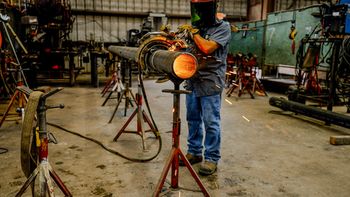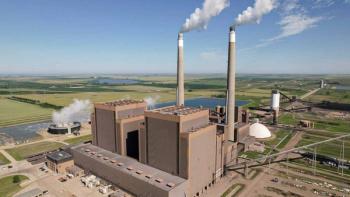
LNG EXPORT: BOOM OR BUST?
In 2006 I was asked to give a presentation at the ASME Turbo Expo about the impact of U.S. LNG imports on gas turbine operation and infrastructure. At the time, the U.S. had five operating LNG import terminals, three on the east coast and two in the Gulf of Mexico, with a total capacity of 5.3 BCF per day.
There were also an additional 17 new LNG import terminals in the advanced stages of development which should have added another 25 BCF per day of LNG import capacity. The resulting LNG imports would have accounted for almost 10% of total gas consumption in the U.S.
Part of the presentation was a prediction of the need for another 70 to 75 LNG import terminals to meet growing energy market demands and declining onshore gas supply in the U.S. Many of these plants were under discussion or in the early planning stages at the time.
Huge amounts of money were spent on their development, and there was significant concern and discussion on how the slightly different import LNG compositions would affect the U.S. natural gas infrastructure. Studies by the U.S. Department of Energy and many industry groups were published to address this topic.
That was in 2006. We all know what happened. Fracking and horizontal drilling revolutionized natural gas production in North America, domestic gas prices plummeted, only three of the 85-plus proposed LNG facilities were built, and of these three, two are idling and one is currently being converted to an LNG export facility. Clearly, we and almost every other expert missed this market trend and its associated technology development needs.
We have seen similar energy market hype followed by boom-and-bust scenarios in the past. Clean coal and the push for integrated gasification combined cycle plants boomed in the early 1970s and then again in the early 2000s as a response to periods of high natural gas prices in the U.S.
In both cases, the boom fizzled into a bust and fewer than ten IGCC power plants were actually built. Coal-based IGCC plants account for a negligible percentage of U.S. power production while the percentage of power produced by coal has slowly declined from the 50% range to the 35% range in the U.S.
We have seen a similar situation with several alternative energy technologies, such as energy storage, distributed power, fuel cells and a host of advanced power technologies. In several of these cases, significant infrastructure was built that is now either being decommissioned or is idling.
These examples show how industry hype can result in a lot of time, money and effort that lead to little tangible results. This is not necessarily negative since the development of each of these energy technologies has moved our understanding and the state-ofthe- art of power plant systems forward. But the cost-to-benefit ratio may be questionable.
Today there is another energy hype: using LNG export facilities to send natural gas to Asia, Europe, and wherever else access to cheap U.S. natural gas is required. At this year’s LNG 17 conference, the largest trade show on LNG markets and technologies, there were vivid discussions of potentially up to 30 new LNG export facilities in North America. Most of those would be located near existing major transport infrastructure such as the Gulf of Mexico or perceived stranded gas such as the northern U.S and Canadian west coast.
Currently, the government’s decision processes for permits and licenses for these hydrocarbon export terminals have caused delays. But if one is to believe the talk of notable energy experts right now, the U.S. and Canada will become a major exporter of natural gas over the next 10-to-15 years.
However, caution might be a better strategy. Beware of irrational exuberance. Whenever there is excitement about any new technology, people prefer to ignore some basic market facts and the downside potential.
Critical questions need to be carefully addressed:
• What and where is the actual market demand for natural gas?
• How do transportation expenses, for example for the use of the Panama Canal, influence the picture?
• Who can and will be the quickest to satisfy this demand at the lowest cost?
• Will Asia develop its own sources of natural gas using advanced drilling technologies, and at what rate?
• Are there alternative suppliers, such as Russia, that can provide cheaper gas?
• How cheap is U.S. natural gas over the long term versus other suppliers?
• And will there be an oversupply of LNG if existing exporters and new exporters, such as Australia and North America, flood the markets?
Honest answers to these questions may help to determine how real a North American LNG export boom market really would be. Certainly, low gas prices will increase the domestic demand for natural gas for power plants and transportation. This will likely be at the expense of other domestic sources of energy.
To be clear: there will be some North American export facilities; two have recently received export licenses and will most likely be completed and there is at least one in British Colombia that is near engineering completion.
But it may well be that the total number of plants actually built will be in the singledigit range rather than 30-plus as is currently predicted. Just like with all the other energy hypes: fewer plants will be built than planned and the profits may be lower than originally predicted. But how much money will be spent before this is realized?
Author
Klaus Brun is the Machinery Program Director at Southwest Research Institute in San Antonio, Texas. He is also the past Chair of the Board of Directors of the ASME International Gas Turbine Institute and the IGTI Oil & Gas applications committee.
Newsletter
Power your knowledge with the latest in turbine technology, engineering advances, and energy solutions—subscribe to Turbomachinery International today.




